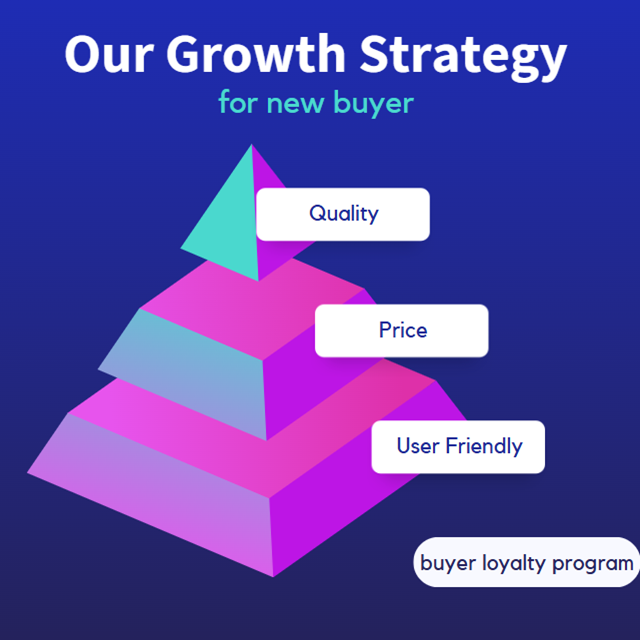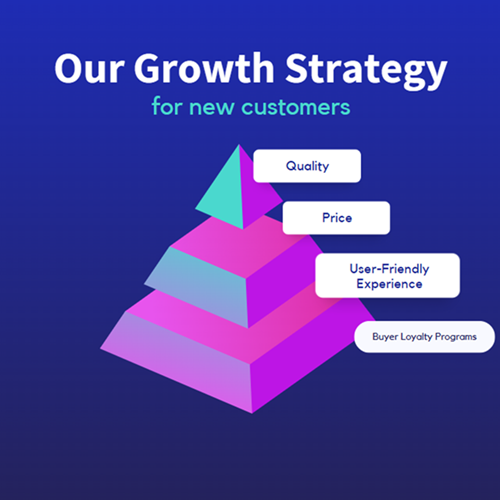Anything Anytime Anywhere
A marketplace that prioritises quality, competitive pricing, and customer satisfaction is designed to create a trustworthy environment where consumers feel assured they are receiving exceptional value on dependable products and services. Below is an in-depth exploration of what such a marketplace would encompass, including key considerations. Core Focus Areas
Quality
1. Curated Selection: The marketplace would adopt a meticulous approach to vetting vendors and their offerings. This might involve:
- A comprehensive application process that includes specific criteria that sellers must meet to qualify.
- Detailed quality control checks and regular inspections to ensure ongoing compliance with high standards.
- Verification of relevant certifications and industry standards to guarantee that products meet established safety and quality benchmarks.
- Sample testing of products or reviews from industry experts prior to onboarding, ensuring only top-tier offerings are available to consumers.
2. Seller Reputation: The platform would place a strong emphasis on the reputation of its sellers by showcasing:
- Detailed ratings and reviews from previous customers, helping buyers gauge seller reliability.
- Transparent display of seller track records, including response times and customer service ratings, ensuring buyers have access to comprehensive seller information.
3. Product/Service Information: Each listing would provide:
- Thorough and precise descriptions of products and services, enabling shoppers to fully understand what they are purchasing.
- High-quality images or videos that demonstrate products in use, offering a clearer understanding.
- Clear specifications and usage instructions, assisting buyers in making informed choices.
4. Authenticity Guarantees: The marketplace would implement several measures to combat the prevalence of counterfeit and substandard goods, including:
- A robust system to verify the authenticity of products, ensuring peace of mind for consumers.
- Partnering with trusted brands to offer exclusive products that meet established quality guidelines.
5. Focus on Durability and Performance: The platform would prioritise products and services that are known for their longevity and performance, encouraging sellers to showcase:
- Items backed by warranties demonstrate their durability.
- Testimonials highlighting the effectiveness of products over time.
Price
1. Competitive Pricing: The marketplace aims to provide advantageous pricing compared to competitors by:
- Encouraging sellers to adjust their prices competitively, possibly through regular benchmarking insights provided by the platform.
- Implementing user-friendly price comparison tools that allow buyers to quickly assess similar products across various sellers.
- Offering attractive bulk discounts, promotional offers, and time-limited sales events that incentivise larger purchases.
- Negotiating favourable rates with vendors based on the marketplace's sales volume, allowing savings to be passed on to buyers.
2. Transparency: The platform would ensure:
- Clear and upfront pricing with itemised breakdowns that reveal all costs without hidden fees, such as shipping or handling.
- Comprehensive FAQ sections that clarify pricing policies and any applicable terms.
3. Value for Money: The marketplace’s focus would go beyond merely being the least expensive; it would emphasise:
- Providing an outstanding balance between price and quality, ensuring that buyers feel they are getting excellent returns on their purchases.
- Regularly showcasing products that receive high user ratings to affirm their value.
For the Buyer
1. User-Friendly Experience: The design will feature:
- Intuitive navigation with a clean layout that allows shoppers to easily find what they’re looking for.
- Enhanced search options that include filters for price range, brand, and distinct product features.
2. Trust and Safety: The platform will be committed to creating a secure shopping experience through:
- Advanced, secure payment gateways that protect sensitive financial information.
- Clearly articulated return and refund policies that give buyers confidence in their purchases.
- Robust customer support is available through multiple channels, including live chat, email, and phone assistance.
3. Information and Education: The marketplace will serve as a valuable resource, providing buyers with:
- Informative product guides and educational content, such as how-to articles and video demonstrations, allow shoppers to make confident decisions.
- In-depth comparisons between similar products to help in the selection process.
4. Personalisation: The platform will utilise data analytics to enhance user experience by:
- Offering customised recommendations based on past purchases and browsing habits, ensuring that buyers see products tailored to their interests.
5. Community Engagement: An active community aspect will be fostered through:
- User-generated content, including reviews and Q&A forums, that encourages interaction between buyers and sellers.
- Initiatives that enable buyers to connect directly with sellers to ask questions and provide feedback.
6. Buyer Protection: Buyers will benefit from:
- Dispute resolution mechanisms are designed to ensure fairness in transactions.
- Clear pathways for reporting issues related to purchases or seller performance.
Potential Strategies and Features
1. Strict Seller Onboarding: A detailed seller onboarding process would be implemented, focusing on:
- Thorough assessments of seller reliability and quality before they are allowed to list products.
2. Quality Badges or Certifications:** Products or sellers that meet stringent quality standards will be visually highlighted with recognisable badges, assisting buyers in making selections.
3. Escrow Services: The marketplace would offer:
- An escrow payment system that holds funds until buyers confirm receipt and satisfaction, enhancing trust in the shopping experience.
4. Independent Product Reviews: Featuring reviews submitted by verified buyers, the platform would provide a clear and unbiased perspective on the products available.
5. Price Monitoring and Alerts: Buyers would be able to:
- Set alerts that notify them of price reductions on items they have shown interest in, ensuring they never miss a deal.
6. Direct Communication Channels: The platform will enable:
- Buyers to easily reach out to sellers with inquiries, creating a more personalised shopping experience.
7. Buyer Loyalty Programs: A rewards system will be instituted to:
- Encourage repeat purchases by offering exclusive deals, discounts, and early access to sales for loyal customers.
8. Data-Driven Recommendations: By analysing shopper behaviour, the marketplace will:
- Use data insights to suggest relevant products or services, making the shopping experience more efficient and tailored.
Challenges
1. Balancing Quality and Price: One of the primary challenges will be maintaining high-quality standards while ensuring that prices remain competitive across the marketplace.
2. Seller Management: Effectively enforcing quality standards and overseeing a diverse range of sellers will require a dedicated and attentive management team.
3. Building Trust: Establishing credibility with buyers will be critical, particularly for a new marketplace looking to attract an initial customer base.
4. Scalability: As the marketplace expands, ensuring consistent quality and customer satisfaction will be paramount to its sustained success.
5. Competition: Distinguishing the marketplace from others that also claim to focus on quality, price, and buyer satisfaction will be essential in forming a loyal customer base.
In conclusion, a marketplace focused on quality, competitive pricing, and buyer satisfaction aims to create a reliable, value-driven experience for consumers. Its success will rest on the effective implementation of strategies that uphold high standards, promote competitive pricing, and deliver exceptional customer experiences.







